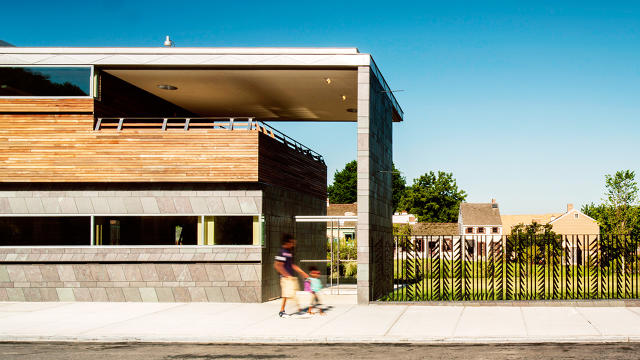Weeksville Heritage Center is intent on preserving the history of 19th-century African Americans.
For the past few years, Brooklyn has been charmed. From the New York Times to the HBO show Girls, the media has taken to calling this borough "the New Brooklyn," a place of coffee shops and artisanal wares and gentrifying newcomers paying top price for real estate. Yet one of the most important things happening today in Brooklyn—on a few acres of land between the Bedford-Stuyvesant, Crown Heights, and Brownsville neighborhood borders—is not new, but as old as the 19th century. Weeksville, a multidimensional museum and historic site, is bringing the past together with today's Brooklyn in a way that is further improving an already-rich community.
Weeksville's story began in 1838. Eleven years after slavery was abolished in New York state, a free African American named James Weeks bought a plot of land. It grew into a successful, thriving village called Weeksville that lasted into the 1900s. The discovery of three original houses from the community—built between 1840 and 1883 and now called the Hunterfly Road Houses—led to preservation efforts. Opened to the public for exploration in December 2013, executive director Tia Powell Harris explains, "Our mission is to document, preserve, and interpret the history of free African-American communities in Weeksville, Brooklyn, and beyond and to create and inspire innovative, contemporary uses of African-American history through education, the arts, and civic engagement."
Today that means a full calendar of events, which includes free concerts and art exhibits. The Historic Hunterfly House Tours are currently the most popular part of the visitor experience. There's also Sustainable Weeksville, which features a weekly farmers market. "It is a programmatic theme that draws on the relationship of 19th-century Weeksville residents to their environment and how they grew, preserved, and managed food," says Powell Harris.

The newest—and some would say, grandest—achievement at Weeksville is the 2014 opening of the Weeksville Heritage Center, a 19,000-square-foot education and cultural arts building. It is a research and training center focused on 19th-century African-American history, with space for visual and performing arts and education programs. "In a very real sense, the expansion of space and amenities provided by the new building enables WHC to more fully realize its mission," says Powell Harris, who believes that while Weeksville is unique, it is very much a part of our national character. "The Weeksville Story is the American Story. Community building, place making, sustainability, education, the entrepreneurial spirit, activism and achieving equity—these are all represented here."
As the area changes—brownstones now sell for well over $2 million dollars in the once economically depressed environs—Weeksville is prepared. "The inherent imperative in our mission is the responsibility we have to ensure that the historic and cultural fabric and footprint of this community is not lost, especially as the 'landscape' shifts," says Powell Harris, who previously served as director of Artistic Affairs at Duke Ellington School of the Arts in Washington, D.C., and associate director of education at the Smithsonian National Portrait Gallery. "The Weeksville experience emanates from a place of inclusion. Our goal is to unite all residents around a shared contemporary vision for the community by reintroducing long-time residents—and introducing new residents and visitors, to what made this community a place of significant history and what continues to inspire continued civic engagement today."